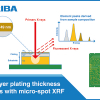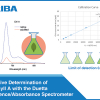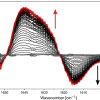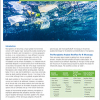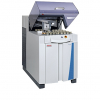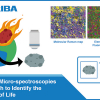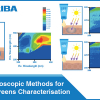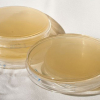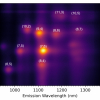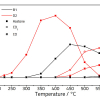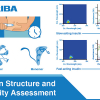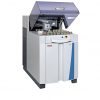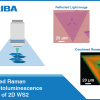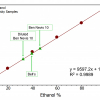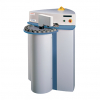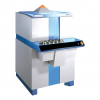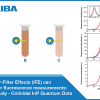Spectroscopy Applications
Micro-XRF is a versatile tool for fast analysis of NiP and Au dual-layer plating thickness on circuit boards without requiring sample preparation.
Fluorescence-based methods to detect and quantify Chlorophyll A offer higher sensitivity than absorbance-based methods.
Learn how the High Temperature Golden Gate™ ATR has been used with a fast time‑resolved IR laser spectrometer to yield important insights into reaction kinetics.
This application note describes the quantification of Simeticone according to European Pharmacopoeia Standard 10.0 (01/2017:1470) using the Specac Pearl™.
The different steps involved in analysing microplastics—including the initial sampling through to data analysis—are discussed in this article.
This application note describes complete soil and sediment analysis with the Thermo Scientific ARL PERFORM’X WDXRF spectrometer.
Raman and XRF microscopies are used to study meteorites.
Fluorescence spectroscopy, Raman microscopy and particle size distribution analysis are used to characterise sunscreens.
This application note presents how and if NIR spectroscopy can be used to identify optimal and sub-optimal lots of powdered gelatine agar.
Single-wall carbon nanotubes (SWCNTs) have unique electrical, thermal, mechanical and optical properties which make them attractive for a wide variety of applications; ranging from drug delivery to battery electrodes. SWCNTs can be envisaged as a graphene layer that has been rolled up into a cylinder with different tube structures possible depending on how the graphene layer is rolled. The tube diameter and chirality (orientation of the graphene lattice with respect to the tube axis) are defined by the roll-up vector.
EDXRF instrumentation is ideal for determining concentrations of multiple elements on air filters in compliance with US EPA requirements.
The thermal reaction of IPA on CeO2 catalysts has been investigated over a range of temperatures using the Selector™ Environmental Chamber accessory.
This application note shows how to characterise protein therapeutic formulations for aggregation behaviour in a matter of seconds with A-TEEM spectroscopy.
Analysis of heavy metals and toxic elements as traces in aqueous solutions demands high sensitivity and accuracy of measurement.
Raman and photoluminescence spectral imaging are applied to reveal otherwise invisible spatial variation in chemical/crystal structure.
This application note details how Raman spectroscopy can offer quantitative and qualitative analysis of whisky samples.
Nanomolar concentrations of complementary DNA are quantified using a molecular beacon with a spectrofluorometer.
This application note discusses the advantages of this WDXRF spectrometer for quantification of nickel ores.
This note describes total oxide X-ray analysis with Thermo Scientific ARL 9900 IntelliPower Series simultaneous/sequential X-ray fluorescence spectrometers.
Fluorescence and absorbance spectroscopy can measure true molecular fingerprints, correcting for IFE in real-time.

